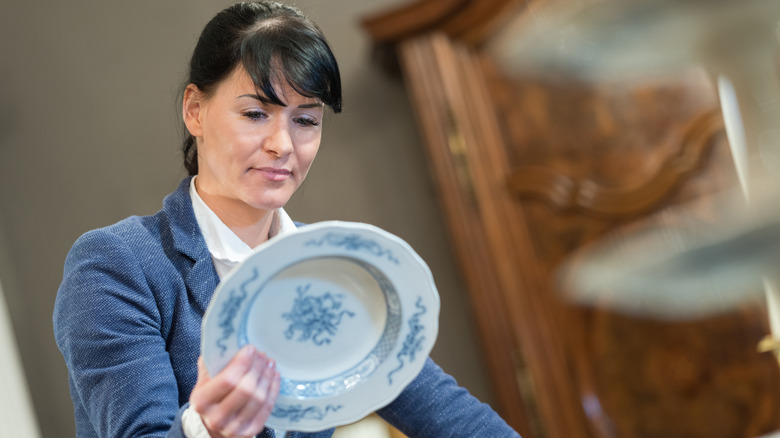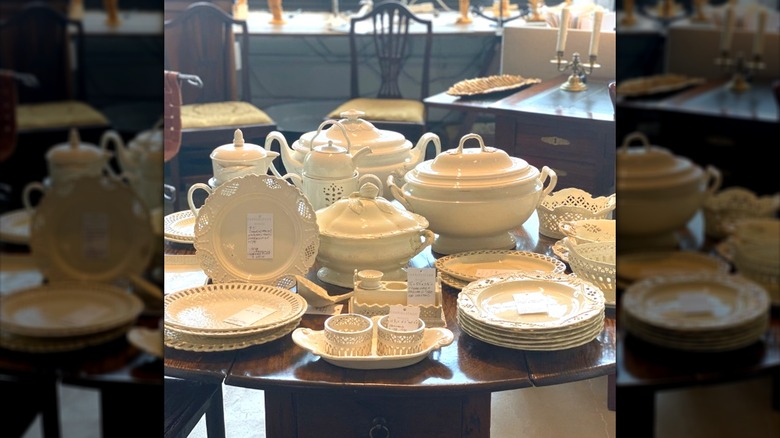Why English Creamware Is The Classic Dishware Worth Looking Out For
Shopping for antique dishware can be a daunting task when you don't know what to look out for. Picking your next favorite dish, bowl, or saucer based on a cute pattern or unique ornament you loved isn't just fine, it's encouraged. The process is meant to be fun and produce eclectic, customized collections that are totally unique to you. However, having some idea of what you're looking at can be useful in making antique thrifting less overwhelming and helping you get the best deals. English creamware is one type of ceramic you might have encountered in the past. If you left it at the store, go back for it, because creamware is one treasured collector's item you'll want to grab for your home thanks to its historical significance and former widespread fame.
First produced in mid 18th century England in response to the popularity of Chinese porcelain, creamware is, like the name suggests, cream-colored, clear-glazed refined earthenware. Because it was cheaper than porcelain, lightweight, and versatile, it became hugely popular for domestic use in homes across the country, later making its way across the pond to America and Europe. It became especially prestigious when, in the 1760s, King George III and Queen Charlotte placed a large order with pioneer creamware ceramicist Josiah Wedgwood, who renamed his product Queen's Ware. Another name that might pop up in association with this gorgeous off-white dishware is Leedsware. This is because the Leeds Pottery factory became Wedgwood's biggest competitor in creamware production at the time. Creamware's hegemony eventually petered out as even cheaper, more practical alternatives, such as Wedgwood's own pearlware, emerged, making it a precious rarity today.
How to identify English creamware
Things may get confusing when it comes to identifying English creamware. Although its distinct look is glazed, cream-colored, naked, and decorated only by nature-inspired sprigs or pierced and molded rims, creamware was also often embellished with overglaze enamels, underglaze painting, and transfer printing. Some of the most commonly found motifs include fruit and plant designs, Chinese influenced blue designs, and prints related to historic events like battles and patriotic figures. Queen's shape plates, with scallop edges as requested by Queen Charlotte, were especially beloved, but you can also find them with shell and feather edges.
There are all kinds of creamware selling today, from the most common tableware to purely ornamental figurines, to unique pieces like bells, candlesticks, toast racks, butter tubs, and shaving jugs. Prices vary greatly, from a few dollars to a few thousand. It can also be difficult to authenticate your latest thrifting find since not a lot of creamware was marked. It wasn't common practice at the time so that competing factories could supplement each other's stocks when needed. If you do come across these dishes in your favorite antique store or online auctioneer, sadly, it might be best to turn them into perfectly hanging decorative plates or the new stars of your mantelpiece display instead of actually eating off of them. Creamware was glazed using lead, which, if transferred to food and liquids, can cause serious health issues.

